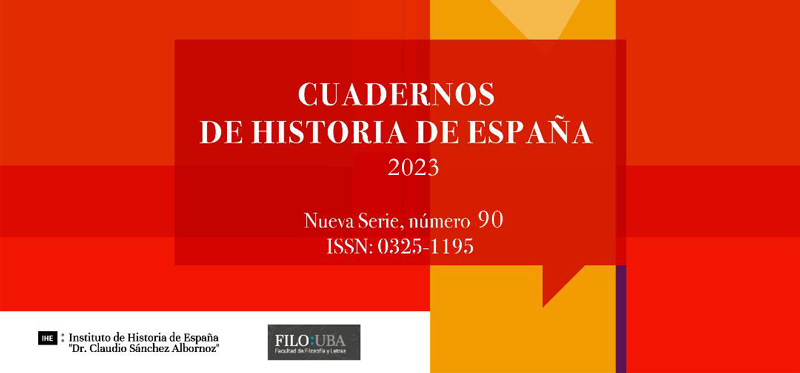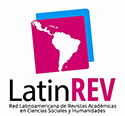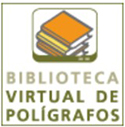The Poem of Mio Cid in the tradition of the Estoria de España: on the so-called Cidian Interpolation
Abstract
This work deals with the analysis of one of the most enigmatic pieces in the tradition of the Estoria de España, known as Cidian Interpolation. This is the text written to cover a textual gap present in the archetype of an important family of texts, which includes the Versión amplificada, the Crónica manuelina and the Crónica de Castilla. This text covers the final part of Cid's biography, from the conquest of Valencia, and presents a very different wording from the alfonsine redaction of the Estoria de España, that is, the Versión crítica. In particular, the story linked to the second part of the Poem of Mio Cid is analyzed here, and we try to demonstrate that it depends on a poem similar to the one transmitted by the Códice de Vivar, probably from the prosification carried out in the historiographical workshop of Alfonso X. Also, the section corresponding to the Cantar de Corpes is studied, which in this case it is very likely that it depends on a rewriting of the preserved poem. We address the problem of the immediate source of this part in the Cidian Interpolation and its insertion within the framework of Cidian literature of the second half of the 13th century.Downloads
References
Bautista, F. (2018). The Poema de Mio Cid in 13th and 14th-Century Romance Historiography. En A. Montaner e I. Zaderenko, (Eds.) A Companion to the «Poema de mio Cid». Leiden: Brill, 412-462.
Campa, M. de la (Ed.) (2009). La «Estoria de España» de Alfonso X: estudio y edición de la «Versión crítica» desde Fruela II hasta la muerte de Fernando II. Universidad de Málaga.
Catalán, D. (1962). De Alfonso X al Conde de Barcelos: cuatro estudios sobre el nacimiento de la historiografía romance en Castilla y Portugal. Madrid: Gredos.
Catalán, D. (1992). La «Estoria de España» de Alfonso X: creación y evolución. Madrid: Seminario Menéndez Pidal, Fundación Ramón Menéndez Pidal y Universidad Autónoma de Madrid.
Catalán, D. (2001). La épica española: nueva documentación y evaluación. Madrid: Fundación Ramón Menéndez Pidal y Seminario Menéndez Pidal.
Chalon, L. (1976) L’Histoire et l’épopée castillane du Moyen Âge: Le cycle du Cid, le cycle des comtes de Castille. París: Honoré Champion.
Dyer, N. J. (1995). El «Mio Cid» del taller alfonsí: versión en prosa en la «Primera crónica general» y en la «Crónica de veinte reyes». Newark- Delaware: Juan de la Cuesta.
EED = Ward (2016).
Entwistle, W. J. (1947). La estoria del noble varón el Çid Ruy Díaz el Campeador, sennor que fué de Valencia. Hispanic Review, 15, 206-211.
Fernández-Ordóñez, I. (1993). «Versión crítica» de la «Estoria de España»: estudio y edición desde Pelayo hasta Ordoño II. Madrid: Seminario Menéndez Pidal, Fundación Ramón Menéndez Pidal y Universidad Autónoma de Madrid.
Funes, L. (Ed.) (2004). Mocedades de Rodrigo. Con la colaboración de F. Tenenbaum. Woodbridge: Tamesis.
Hijano Villegas, M. (2013). La materia cidiana en las crónicas generales. En A. Montaner Frutos (Ed.), «Sonando van sus nuevas allent parte del mar»: El «Cantar de Mio Cid» y el mundo de la épica. Toulouse: Université Toulouse-Le Mirail. 141-167.
Lacomba, M. (2009). Au-delà du “Cantar de mio Cid”: Les épigones de la geste cidienne à la fin du XIIIe siècle. Madrid: Casa de Velázquez.
Menéndez Pidal, R. (Ed.) (1955). Primera crónica general de España. Madrid: Seminario Menéndez Pidal y Gredos. 2 vols.
Montaner, A. (2005). El epitafio épico del Cid. En M. Pampín Barral y C. Parrilla García (Eds.), Actas del IX Congreso Internacional de la Asociación Hispánica de Literatura Medieval. Coruña: 18-22 de septiembre de 2001. La Coruña: Universidad y Toxosoutos. 3: 193-203.
Montaner, A. (Ed.) (2016). Cantar de mio Cid. Madrid: Real Academia Española.
Montaner, A., y Boix Jovaní, A. (2005). Guerra en Sarq Al’andalus: las batallas cidianas de Morella (1084) y Cuarte (1094). Zaragoza: Instituto de Estudios Islámicos y del Oriente Próximo.
Pattison, D. G. (1977). The «Afrenta de Corpes» in Fourteenth-Century Historiography. En A. D. Deyermond (Ed.). «Mio Cid» Studies. Londres: Tamesis. 129-140.
Pattison, D. G. (1983). From Legend to Chronicle: The Treatment of Epic Material in Alphonsine Historiography. Oxford: Society for the Study of Mediaeval Languages and Literature.
PCG = Menéndez Pidal (1955).
Rochwert-Zuili, P. (1998). Du Poème à l’Histoire: La geste cidienne dans l’historiographie alphonsine et néo-alphonsine (XIIIème-XIVème siécles). Tesis doctoral. Université Paris XIII.
Russell, P. E. (1978). El Poema de Mio Cid como documento de información caminera. En P. E. Russell, Temas de «La Celestina» y otros estudios: del «Cid» al «Quijote». Barcelona: Ariel, 159-205.
Ward, A. (Ed.) (2006). Estoria de los godos. Oxford: The Society for the Study of Medieval Languages and Literature.
Ward, A., (Dir.) (2016). Estoria de Espanna Digital. University of Birmingham, estoria.bham.ac.uk (22/11/2022).
Copyright (c) 2023 Francisco Bautista

This work is licensed under a Creative Commons Attribution 4.0 International License.









.png)












.png)
.png)
.png)








